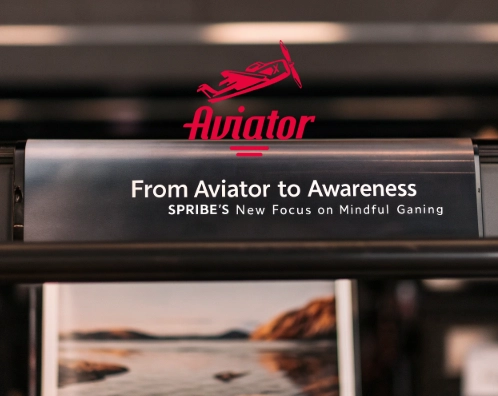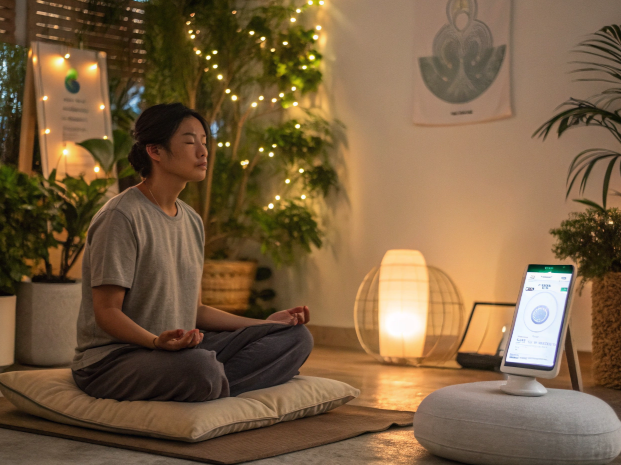How AI-Powered Sound Therapy Is Transforming Mental Wellness
Imagine music that knows how you feel—because it listens to your body. Artificial intelligence is ushering in a revolutionary shift in how we use sound for mental wellness. Instead of static playlists, AI sound therapy offers dynamic, responsive sessions that change based on your pulse, breathing, and even the time of day.
These soundscapes aren’t just relaxing—they’re deeply personal. They adjust in real time to support your emotional state, helping you relax, focus, or fall asleep faster. The result? A smarter, more intuitive form of healing through sound.
What Is AI-Based Sound Therapy?

Music has always been a universal tool for emotion and self-regulation. But what if it could adapt to your real-time physiological signals?
AI-driven sound therapy uses advanced algorithms to read biometric data—such as heart rate or respiratory rhythm—and generate audio that aligns with your current state. Think of it as an audio cocoon: a sonic environment that evolves with your needs.
These technologies are now built into everything from mobile apps and headphones to wellness retreats and therapeutic spaces.
How Does It Work?
The technology behind AI sound therapy combines biometric sensors and adaptive audio engines. Here’s what’s typically measured and used:
- Heart rate (HR): Indicates arousal, stress, or calm
- Breathing patterns: Reflect emotional regulation
- Brain activity (EEG-compatible devices)
- Environmental context: Light levels, time of day, user activity
The AI uses this data to generate real-time soundtracks that can be calming, energizing, or meditative, depending on what your body needs.
Case Study: Endel — The Personalized Soundscape App

One of the most prominent examples in the field is Endel, an AI-powered app that generates sound environments based on user biometrics, circadian rhythms, and personal context.
Why Endel Stands Out:
- Integrates with biometric devices for real-time feedback
- Adapts to user activity: work, rest, or meditation
- Uses neuroacoustic principles validated by neuroscientists
- Partners with global brands like Universal Music to create immersive wellness audio
Endel doesn’t play music—it creates a fluid, adaptive sound journey designed to match your inner state.
Measurable Benefits of AI Sound Therapy
| Metric | Before Session | During AI Sound Therapy |
|---|---|---|
| Heart Rate | 85–95 BPM | Decreases to 65–75 BPM with consistency |
| Anxiety Level | Elevated, shallow breathing | Slower breathing, tension reduction |
| Focus/Concentration | Scattered attention | Enhanced cognitive clarity |
| Sleep Quality | Frequent disruptions | Deeper sleep, fewer awakenings |
Did you know? In 2021, Endel became the first AI app to sign a record deal—its adaptive audio was officially recognized as a form of musical composition.
Where Is AI Sound Therapy Being Used Today?
From casual users to wellness professionals, AI-generated soundscapes are gaining traction across multiple fields:
- Mobile Apps – Tools like Endel, Brain.fm, and Mubert offer stress relief, productivity boosts, and guided relaxation.
- Meditation Retreats – Used in sound chambers or during breathwork for enhanced immersion.
- Therapy Clinics – Supports mental health treatments, PTSD recovery, and anxiety relief.
- Workspaces – Used in co-working hubs to minimize distractions and optimize deep focus.
Psychological Benefits
- Enhanced Mindfulness
Because the audio environment adapts to your breathing and heart rate, it reinforces awareness of the present moment — a core goal of mindfulness practice. - Improved Sleep Hygiene
Instead of static playlists or background noise, AI generates real-time sleep support based on your internal rhythms, helping to lower cortisol and deepen sleep cycles. - Emotional Regulation
For users dealing with anxiety, the ability to receive immediate sonic feedback that reflects (and stabilizes) their nervous system is both grounding and empowering.
Pros and Cons of AI Sound Therapy
While the technology is exciting, it’s important to recognize both its advantages and current limitations.
| Advantages | Limitations |
|---|---|
| Personalized in real-time | Requires access to wearables or sensors |
| Scientifically supported by neuroscience | Some apps may rely on estimated data |
| Adaptive to various goals (focus, sleep) | Not all users respond equally to auditory cues |
| Integrates into daily routines seamlessly | Subscription models can be costly |
Tip: If you’re new to this space, start with a free version of Endel or Brain.fm before investing in advanced hardware integrations.
How to Choose the Right AI Sound Tool for You
There’s no shortage of AI audio wellness apps out there. Here’s how to narrow it down:
- For Sleep Optimization: Try Endel’s “Sleep” mode, designed to sync with circadian rhythms and promote melatonin production.
- For Focus and Work: Brain.fm uses patented algorithms that support deep work and attention spans.
- For Relaxation and Meditation: Mubert offers generative music with a minimal aesthetic, ideal for background calm.
- For Integration with Wearables: Look for platforms that sync with smartwatches or heart-rate sensors for deeper personalization.
Real-World Impact: How People Are Using AI Sound Today
Parents use sleep-focused soundscapes to soothe infants — and themselves.
Remote workers play AI soundscapes to block distractions and maintain flow during long creative tasks.
Therapists use AI-generated music in trauma therapy to stabilize emotional spikes.
Yoga instructors and retreat leaders integrate these sounds into guided sessions for deeper student immersion.







